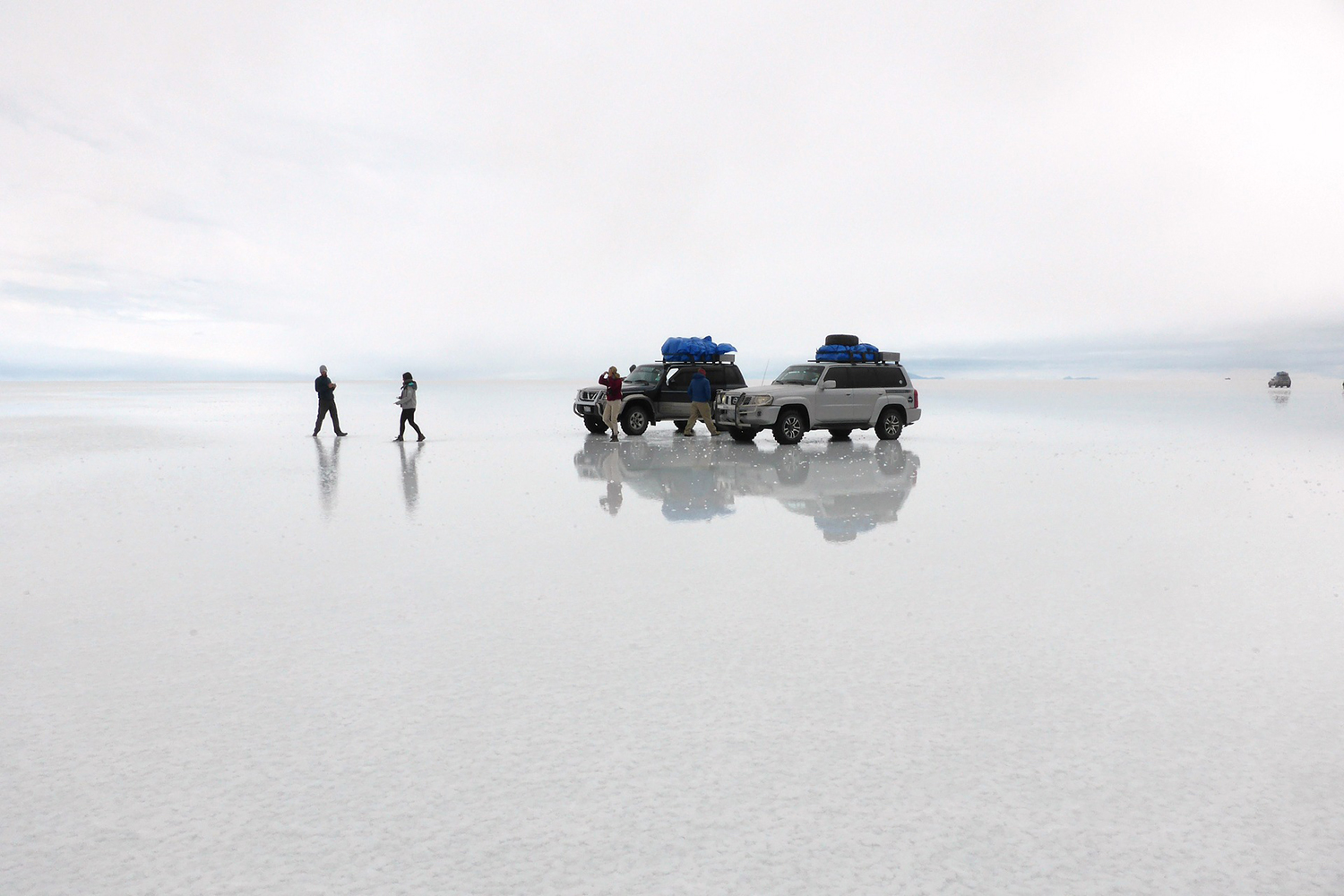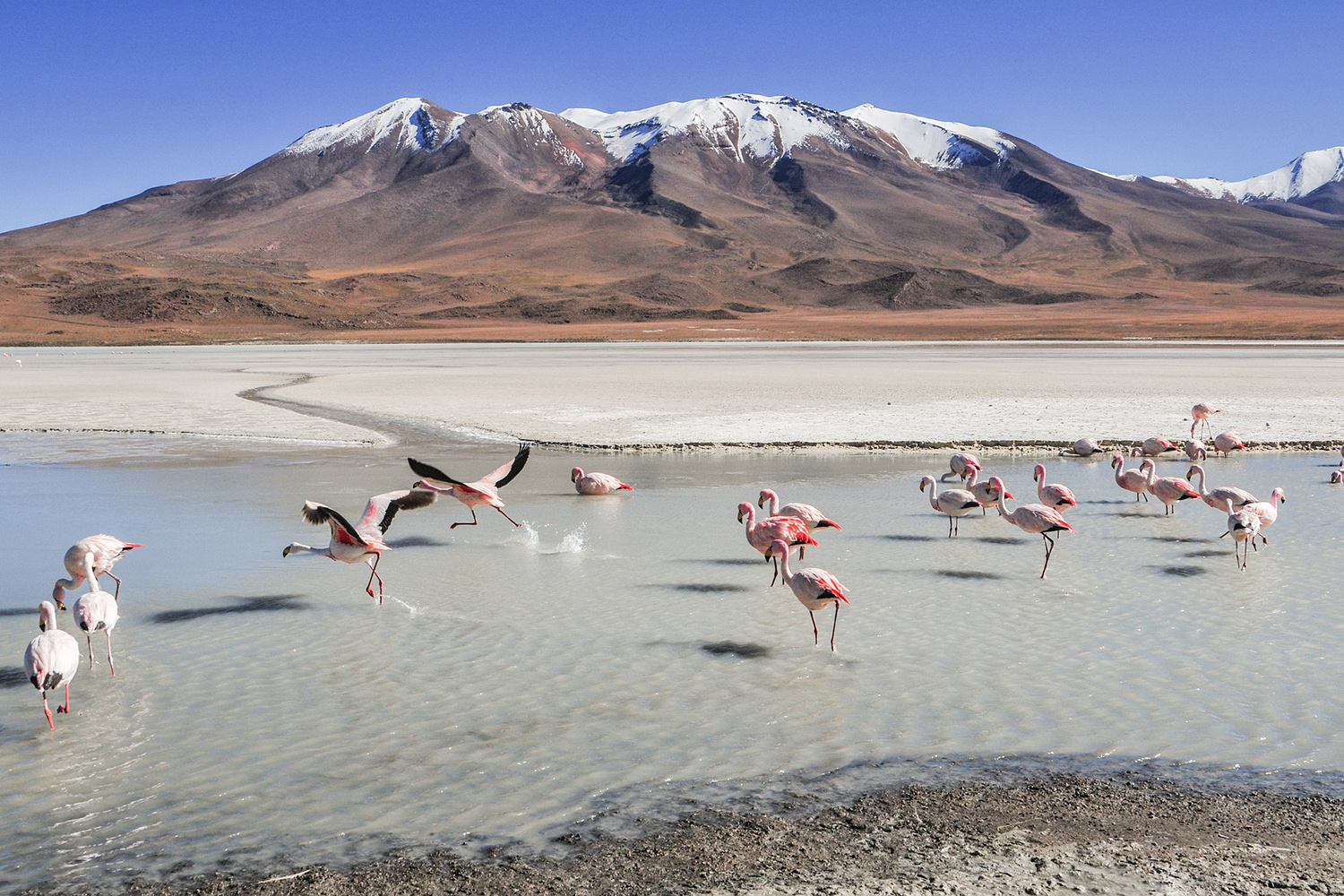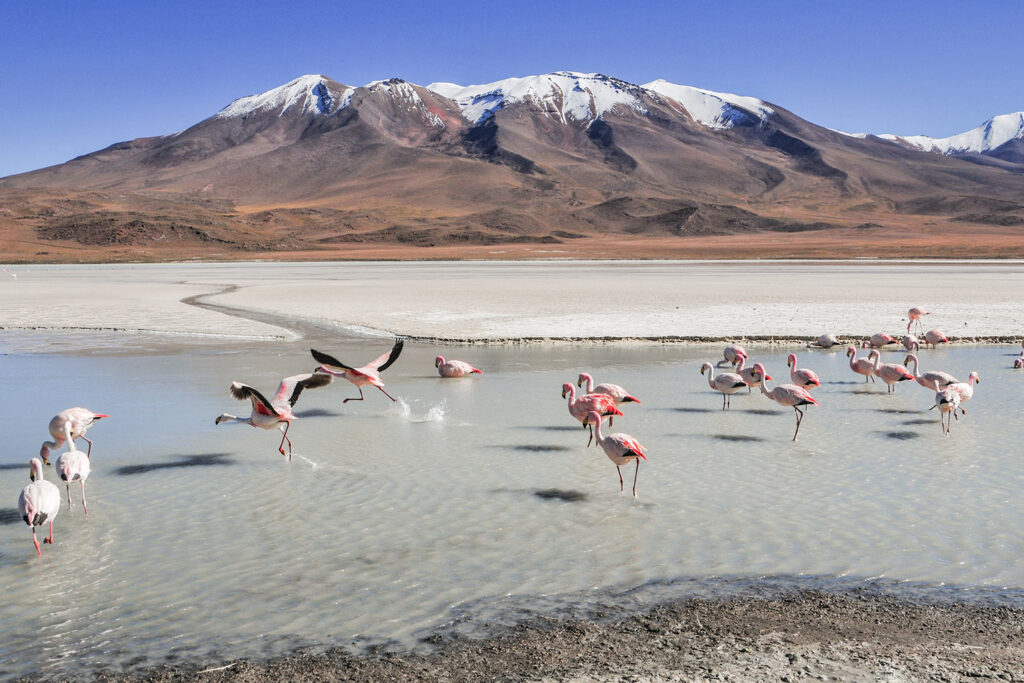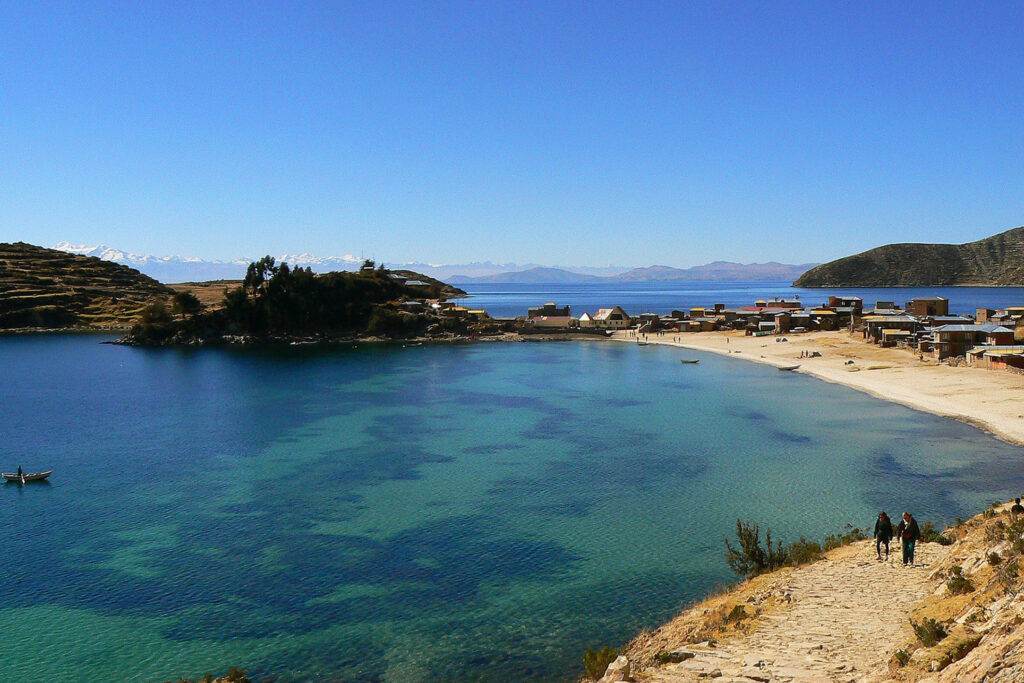When to visit Uyuni Flats in Bolivia: Wet or Dry Season?
The best time to visit the Uyuni Salt Flats really depends on your preference of what you want to see: do you want to capture the mirror effect during the rainy season or see the hexagons and pentagons of crusted salt during the dry season? Read on to learn more.
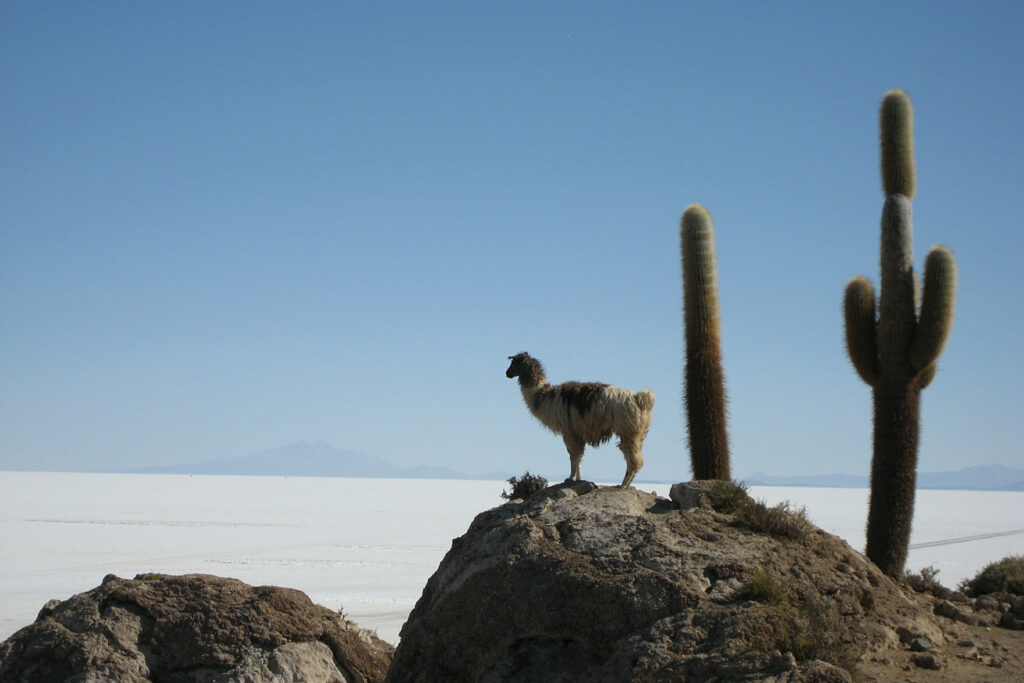
What is Salar de Uyuni known for?
The Salar de Uyuni in South-Western Bolivia is one of the most beautiful places on earth you’ll ever go. The Salar de Uyuni isn’t just the world’s biggest salt flat (4,086 sqm) it’s also the world’s highest (12 000 ft) salt flat. Add this to the fact that your accommodation options consist of a luxury airstream camper or a hotel constructed entirely out of salt, and you have all the ingredients for the adventure of a lifetime. Now that your mind’s made up, you have to decide when to go.
Deciding whether to visit in the wet or the dry season is your first question you may have before booking your trip.
Deciding whether to visit in the wet or the dry season is your first question you may have before booking your trip.
Uyuni in the wet season: The World’s Biggest Mirror and Stunning Sunrises From December to April
The wet season starts in December and ends in April. The rain will make that beautiful mirror effect, an unbelievable image of infinity. When nearby lakes overflow, or the area gets rain, a thin layer of water covers the expanse, transforming it into a massive reflective mirror that makes for jaw-dropping, dreamlike photos.
Uyuni receives less than 5 inches of rain per year, but the vast majority of this falls between December and April. All the water makes getting around a bit harder (we provide waterproof boots!), so come prepared for the fact that you may not be able to reach some parts of the salar, most notably Incahuasi ‘island’. The spectacular mirror-effect created by all that water more than makes up for any hardships – the rainy season is an extremely popular time to visit, so be sure to book well in advance.
***
Uyuni’s sunrises and sunsets are always incredible, but in the wet season, they become truly ethereal.
***
Uyuni in the dry season: Best time to take hilarious photos and move easily April through September
Uyuni is a high-altitude desert and it receives zero rainfall from April through September and only a smattering of drizzle in October and November. From June till at least November, the salt flats are rock hard and extremely easy to drive on. This means you’ll be able to get around with no hassles and will be assured of visiting the ‘islands’ (outcrops of cacti), caves and volcanoes that are included on our 4-day itinerary.
If dry weather is what you’re after, the months with the lowest chance of rain in Uyuni are June-October. The dry season is the best in terms of being able to move easily around the country (this applies actually not only to Uyuni but to other destinations in the rest of the country), almost all dirt roads will be accessible.
***
The dry season is also the best time to take hilarious, perspective-shifting photos as the pure white backdrop serves as Nature’s version of the blue screen. The lack of cloud cover means that both sunblock and warm clothing – especially in the chilliest months of June, July and August – are essential. It is winter time though, so you will have access to all the attractions but come prepared for very cold nights with low temperatures (-15ºCelsius) in Uyuni.
***
So… when should I visit?
To see Salar de Uyuni’s breathtaking mirror effort, visit during wet season, from December to April—but be aware that when it gets too rainy, it can be hard to get around and you might not be able to access certain areas.
May to November is the dry season, which means temperatures are colder, but the ground is harder and you can drive across the land more easily. The ideal month to visit is May, when the seasons transition from wet to dry and you’ll have a good chance of seeing the salt flats both dusty and reflective.
How do I get to Salar de Uyuni?
Salar de Uyuni sits near the point where Bolivia, Argentina, and Chile meet, so travelers tend to come from three different starting places. The town of Uyuni in Bolivia is the most popular place to embark on tours of the salt flats. The small town is so close to the flats, you can easily take day trips. If you’re traveling from La Paz to Uyuni, you can take a one-hour flight or an eight-hour overnight bus.
San Pedro de Atacama in Chile is another well-known starting point for tours of the salt flats, but because it’s about 200 miles away, most tours are three days long. If you’re coming from Argentina, look into multi-day tours operating out of Tupiza, Bolivia, a good base less than 60 miles over the Argentinian border.
How do I choose the right tour for visiting Salar de Uyuni?
We list three carefully thought-out Uyuni itineraries on our website, but we also can craft a bespoke adventure just for you. Contact us and our travel expert will answer all your questions and help you plan a perfect trip to Uyuni Salt Flats.


